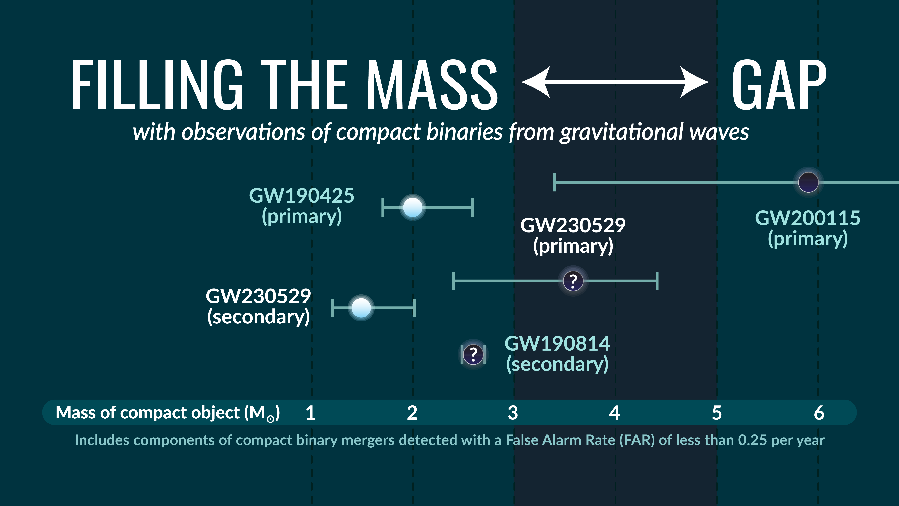The first direct detection of gravitational waves (GWs) by
LIGO detectors in 2015 marked the dawn of a new
era for astronomy. Since then, many other detections of GWs
have been made, coming from different types of mergers of
binary systems of compact stars, systems composed of neutron stars
and/or black holes. For GW230529, despite the fact that only one of the
detectors (LIGO-Livingston) produced data usable at
time of the event, advanced analysis techniques and methods
such as adapted filtering made it possible to clearly identify it.
For several years scientists have believed that there does not exist
any compact star (neither neutron star nor black hole) in a
mass interval between 3 solar masses and 5 solar masses,
called the "mass gap". The reason is that neutron stars have
a maximum mass around 3 solar masses and that the formation
of a stellar black hole with such a low mass is
difficult. With an estimated mass of around 3.6 solar masses
the most massive object, GW230529 is the first candidate for a
binary system with a component in this "mass gap". Given
our current understanding of neutron star populations and
black holes, this mass is compatible (with a probability of 99%)
with a black hole. However, the probability that it is a
neutron star is weak but not zero. Therefore, we cannot exclude
with certainty the scenario where this component is a
neutron star. On the other hand, the second object of GW230529, whose mass has
90% chance of being between 1.2 solar masses and 2.0 masses
solar, is most likely a neutron star. Thanks to a
component most likely found in the "mass gap", GW230529
is an excellent observation for refining our evolutionary models
and the end of life of “normal” stars (main sequence).

The formation process of GW230529 is quite uncertain. The
current knowledge of gravitational supernovae disfavors
this scenario as being at the origin of the unknown component because
of their mass. A more plausible scenario is formed by
fallout, where a black hole forms after the supernova via accretion
of residual material. To date, the numerical models of these
processes are always subject to strong uncertainties, making
difficult to precisely determine the limits of the masses of
neutron stars and black holes. GW230529 is therefore an asset
valuable for constraining these models.
Another possible scenario for the formation of this star in the
"mass gap" is through a neutron star merger. We can
imagine in this case that the other star of GW230529 would be the member
of an old triple system. Finally, a last possibility is that this
another star was captured by the unknown object when it was evolving
in a young stellar cluster or an active galaxy nucleus. We don’t
nor can we exclude a non-stellar origin such as a
primordial black hole, formed at the beginning of the Universe.
[1] Observation of Gravitational Waves from the Coalescence of a 2.5−4.5 Msun Compact Object and a Neutron Star, LIGO-VIRGO-KAGRA Collaboration Astrophysical Journal
